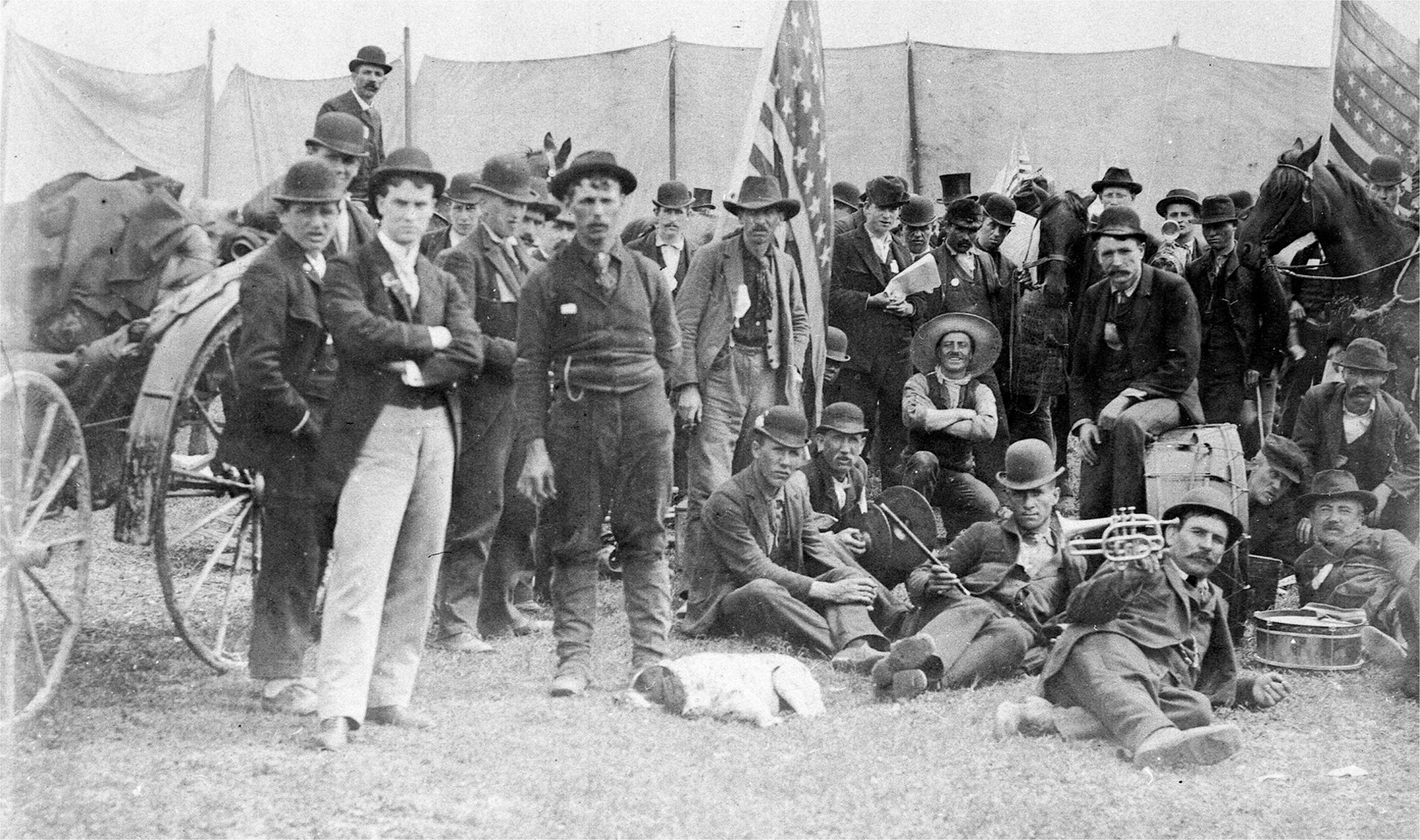The American Promise:
Printed Page 566
The American Promise Value
Edition: Printed Page 536
Coxey’s Army
Masses of unemployed Americans marched to Washington, D.C., in the spring of 1894 to call attention to their plight and to urge Congress to enact a public works program to end unemployment. Jacob S. Coxey of Massilon, Ohio, led the most publicized contingent. Convinced that men could be put to work building badly needed roads for the nation, Coxey proposed a scheme to finance public works through non-
Starting out from Ohio with one hundred men, Coxey’s army, as it was dubbed, swelled as it marched east through the spring snows of the Alleghenies. In Pennsylvania, Coxey recruited several hundred from the ranks of those left unemployed by the Homestead lockout.

On May 1, Coxey’s army arrived in Washington. When Coxey defiantly marched his men onto the Capitol grounds, police set upon the demonstrators with nightsticks, cracking skulls and arresting Coxey and his lieutenants. Coxey went to jail for twenty days and was fined $5 for “walking on the grass.” But other armies of the unemployed, totaling possibly as many as five thousand people, were still on their way. The more daring contingents commandeered entire trains, stirring fears of revolution. Journalists who covered the march did little to quiet the nation’s fears. They delighted in military terminology, describing themselves as “war correspondents.” To boost newspaper sales, they gave to the episode a tone of urgency and heightened the sense of a nation imperiled.
By August, the leaderless, tattered armies dissolved. Although the “On to Washington” movement proved ineffective in forcing federal relief legislation, Coxey’s army dramatized the plight of the unemployed and acted, in the words of one participant, as a “living, moving object lesson.” Like the Populists, Coxey’s army called into question the underlying values of the new industrial order and demonstrated how ordinary citizens turned to means outside the regular party system to influence politics in the 1890s.